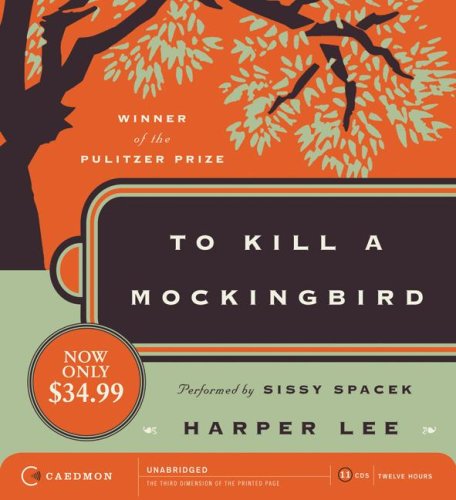
Harper Lee’s classic novel of a lawyer in the deep south defending a black man charged with the rape of a white girl
One of the best-loved stories of all time, To Kill a Mockingbird has earned many distinctions since its original publication in 1960. It won the Pulitzer Prize, has been translated into more than forty languages, sold more than thirty million copies worldwide, and been made into an enormously popular movie. Most recently, librarians across the country gave the book the highest of honors by voting it the best novel of the twentieth century.
“When he was nearly thirteen, my brother Jem got his arm badly broken at the elbow…. When enough years had gone by to enable us to look back on them, we sometimes discussed the events leading to his accident. I maintain that the Ewells started it all, but Jem, who was four years my senior, said it started long before that. He said it began the summer Dill came to us, when Dill first gave us the idea of making Boo Radley come out.”
Set in the small Southern town of Maycomb, Alabama, during the Depression, To Kill a Mockingbird follows three years in the life of 8-year-old Scout Finch, her brother, Jem, and their father, Atticus–three years punctuated by the arrest and eventual trial of a young black man accused of raping a white woman. Though her story explores big themes, Harper Lee chooses to tell it through the eyes of a child. The result is a tough and tender novel of race, class, justice, and the pain of growing up.
Like the slow-moving occupants of her fictional town, Lee takes her time getting to the heart of her tale; we first meet the Finches the summer before Scout’s first year at school. She, her brother, and Dill Harris, a boy who spends the summers with his aunt in Maycomb, while away the hours reenacting scenes from Dracula and plotting ways to get a peek at the town bogeyman, Boo Radley. At first the circumstances surrounding the alleged rape of Mayella Ewell, the daughter of a drunk and violent white farmer, barely penetrate the children’s consciousness. Then Atticus is called on to defend the accused, Tom Robinson, and soon Scout and Jem find themselves caught up in events beyond their understanding. During the trial, the town exhibits its ugly side, but Lee offers plenty of counterbalance as well–in the struggle of an elderly woman to overcome her morphine habit before she dies; in the heroism of Atticus Finch, standing up for what he knows is right; and finally in Scout’s hard-won understanding that most people are essentially kind “when you really see them.” By turns funny, wise, and heartbreaking, To Kill a Mockingbird is one classic that continues to speak to new generations, and deserves to be reread often. –Alix Wilber


